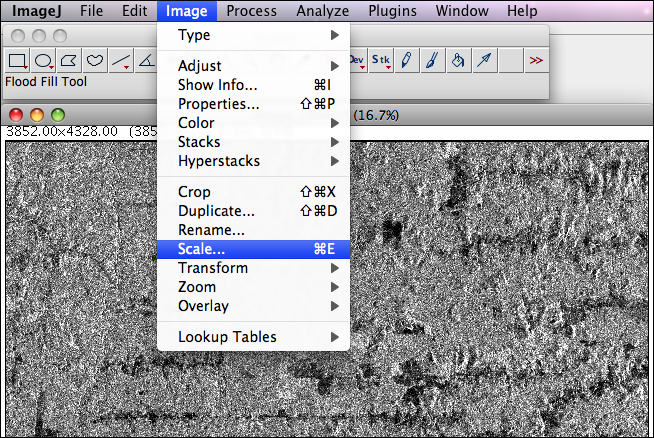

Check Overlay, which saves the scale bar in a separate layer and does not alter your image data yet.Specify how the scale bar should look and where it should be.If you do not see it, find out the size of a pixel in your image and enter it using Analyze > Set Scale. Make sure scale information is shown in the image window.

To compare brightness between images, set identical B&C levels. Do NOT click Apply, if you want to keep the original data. To balance colors or enhance faint features, set select each channel in turn and adjust it using B&C ( Image > Adjust > Brightness/ Contrast). Click More > and select the color you want the channel to be.Įnhancing images with Brightness & Contrast.In the Channels Tool, set the display mode to Color.Select the channel you would like to change, using the slider at the bottom of the window.Use the Channels Tool ( Image > Color > Channels Tool) to create a composite image, merge channels, turn channels on and off, change pseudocolor, or split channels into separate windows. Working with color using the Channels Tool To analyze or adjust one channel at a time, select it with the slider at the bottom of the window. 3rd dimension: hold down Option or Alt while doing the aboveĪ composite image is a hyperstack with multiple color channels.2nd dimension: hold down Control while doing the above.1st dimension (uppermost slider): keys or arrow keys or mouse horizontal scrolling.Step through the slices in each dimension by dragging the sliders in the window, or with the keyboard: Individual images in a stack are called slices.Ī hyperstack is a dataset with multiple dimensions – e.g. A confocal z series and a time-lapse movie are examples of stacks. To pan (move to a different part of the image when the image is larger than the window) hold the spacebar while dragging.Ī stack is a sequence of images displayed in one window with a slider at the bottom.Hold Option or Alt to keep the window the same size while zooming. To zoom in on the image, mouse over the part of the image you want to blow up, and press the + (plus) key.In the System section, look next to Installed memory (RAM).Click the Start button, right-click Computer, and then click Properties.To find out how much physical memory you have:Īpple menu > About This Mac and look next to Memory. If you still run out of memory, open the file as a virtual stack by checking the box in Bio-Formats Import Options. Set Maximum Memory to 75% of your physical memory (RAM). To increase the memory that ImageJ can use, Edit > Options > Memory and Threads. z stacks, tiled images, time-lapse videos) may cause ImageJ to run out of memory. Increasing memory to work with large files for phase-contrast or DIC), set all the sliders to 255. In the example below, the first channel is blue and the last channel is magenta. Usually, this is in increasing order of wavelength (blue, green, red, far-red, transmitted). The channels will be in the order they were acquired. Then, set the color scheme for each channel using the Red, Green, Blue component sliders as shown below. Under Color options, choose Color mode: Custom. (To change colors after opening the image, use the Channels Tool.) If your channel colors come out wrong, you can fix them when you open the image with Bio-Formats. If you have problems, set the options as shown below. To deal with the many possible kinds of images, Bio-Formats displays Import Options when you open a file. That means you do not have to convert your files into TIFF to use them in ImageJ - in fact, it's better to keep them in the original format. Not only does it read the image data, it also understands the scale information and lets you view details about the image acquisition. To make sure Bio-Formats is used, Edit > Options > ImageJ2 and uncheck Use SCIFIO when opening files.īio-Formats is a plugin, included in the Fiji package, that interprets commercial image formats - such as those from microscopes. In most cases, Bio-Formats is recommended for microscope images. Drag-and-drop it directly onto the ImageJ toolbar.įiji has two ways to read commercial image formats (such as ND2 and CZI): Bio-Formats and SCIFIO.Usually, you can open an image using either of these methods: Otherwise, the automatic updater may not work. Install Fiji in a user directory (such as your Desktop or Documents folder), not Program Files or Applications.


 0 kommentar(er)
0 kommentar(er)
